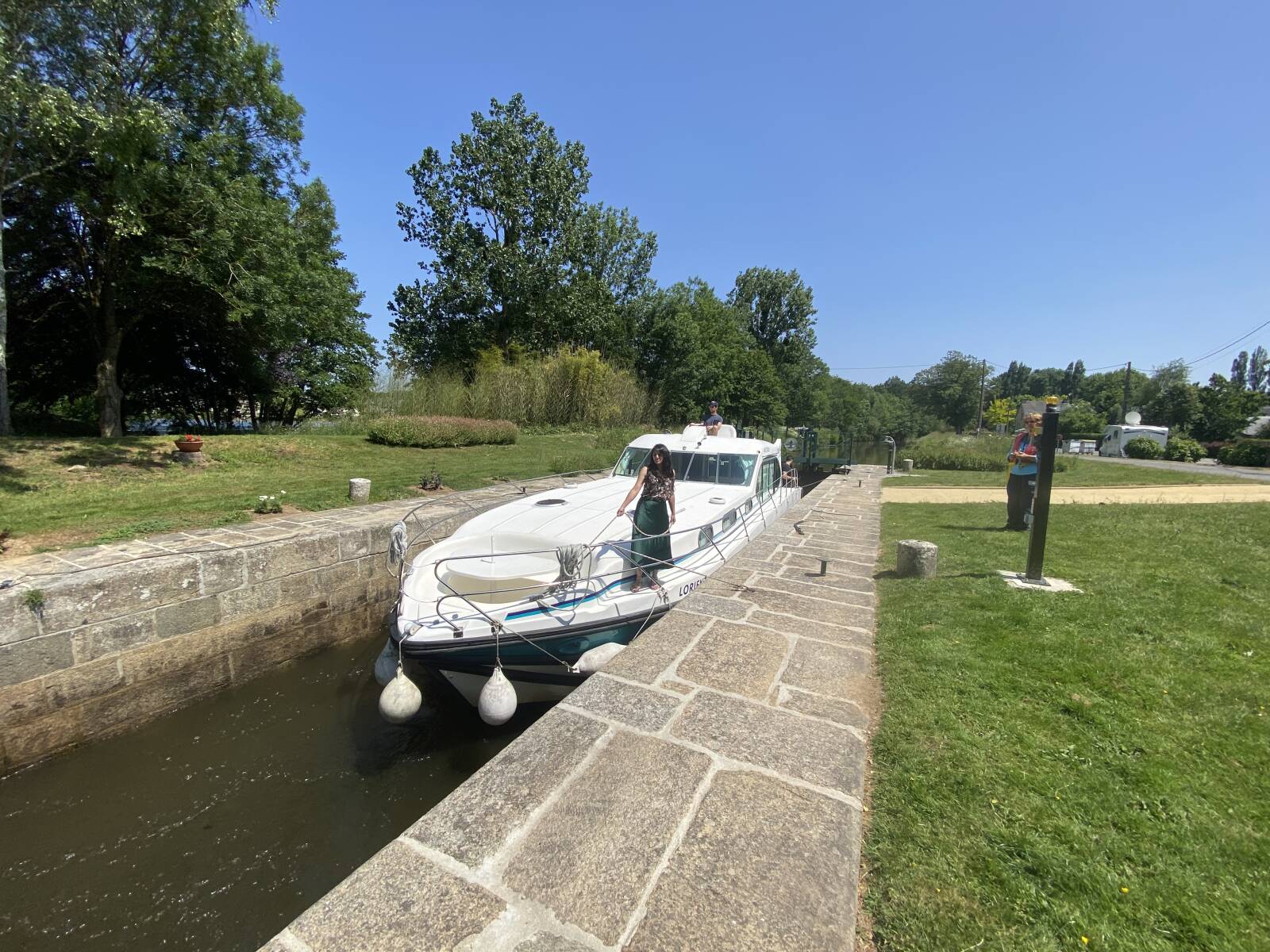Simply pass through the locks on your river cruise!
In France and Europe, various waterways are accessible to boats and barges without a licence. Easy to pilot, these allow you to go on a river cruise without having any experience or maritime knowledge. And as they can be hired, anyone can discover the joys of navigation. However, this does not mean that these boats can be driven in any way. There are rules to follow.
At Crisboat, before your departure, we train you to pilot our boats and we explain the main principles of river cruising without a licence. We also explain how to pass the locks, as the question of how to pass them comes up almost every time. It has to be said that these locks are always a source of concern. However, they are very simple to pass and require a minimum of intervention on your part. So there's no need to worry, you'll make it through with flying colours!
The first lock passage, a moment of apprehension
When cruising on a river without a licence, it is common to have to pass a lock. But the number of them varies depending on the destination. In fact, the more hilly a landscape is, the more of them there will be since their role is to raise or lower boats by several metres. However, these should not be considered as constraints or difficulties. Generally, they are either electric or operated by lock-keepers who may ask you for help, but don't worry, it's not really complicated as they are there to advise you and show you what to do.
And once your apprehension is gone, you will see that it is a pleasant moment, which allows you to discuss with other boaters and with the lock keepers, and which can even be fun. It's also an opportunity to contemplate these structures up close, especially as some of them are quite impressive.
Our tips on how to pass them easily and keep good memories
When you hire a boat without a licence from our company, you benefit from a training session before your departure during which we discuss the passage of locks. And to ensure that this stage takes place in optimal conditions, here are some recommendations.
First of all, you should prepare your crew by designating the roles of each person. If you are at the helm, someone else should be in charge of the mooring lines (or vice versa). If you are taking your children on a river cruise, make sure they are wearing life jackets to avoid accidents. Then, if a lock keeper is present, you must report to him by phoning, using the VHF of your boat or by going to see him. If there is no lock keeper or if the release is automatic, there is no need to warn anyone. Next, we advise you to move forward slowly. Always manoeuvre at a slower speed, especially to avoid damaging your boat. If other boats are passing at the same time as you, remember to give them room. Finally, when you have stopped your boat, tie it up at the bow and stern to keep it steady by placing the line around the cleat but without tying a knot. When raising or lowering the boat, hold both mooring lines firmly. And wait until the doors are open before starting your boat and getting out, again at a slow pace. There is no point in rushing.
When cruising on a river without a licence, taking your time is essential, both for successful manoeuvring and for enjoying the journey and the scenery! And if in doubt, don't hesitate to ask other boaters for advice.
